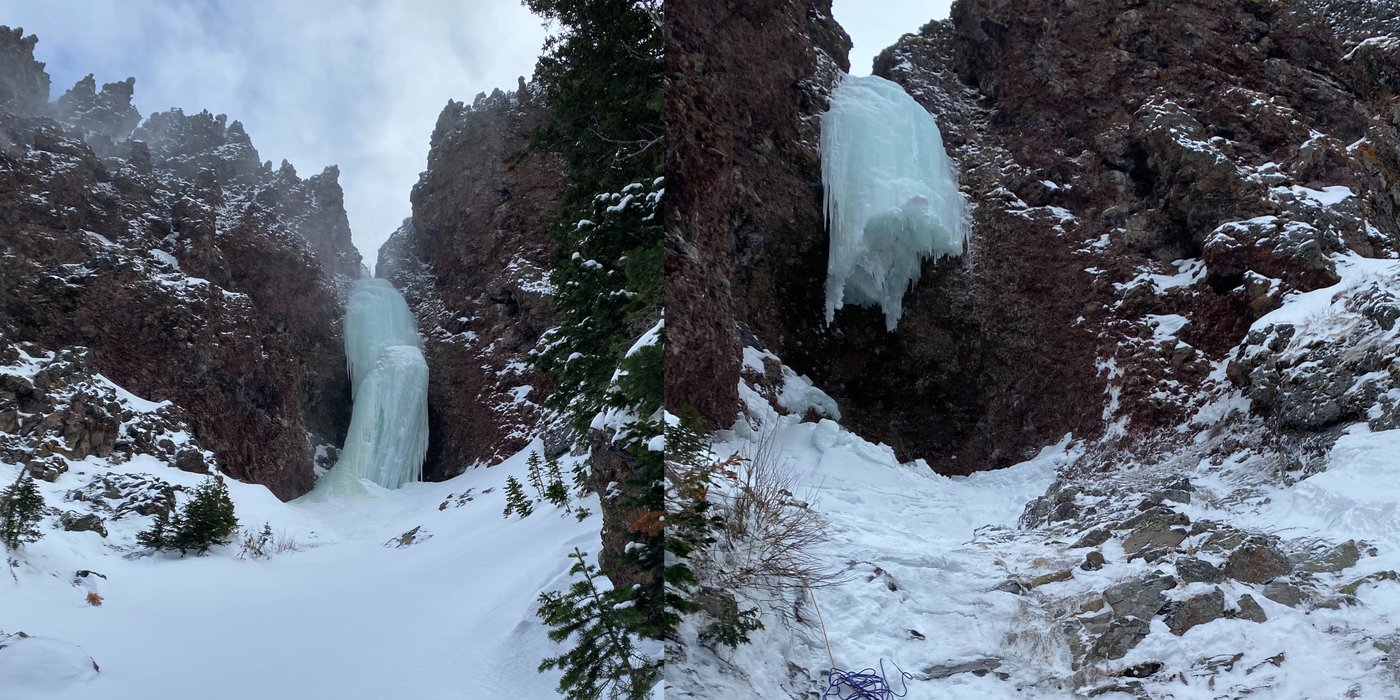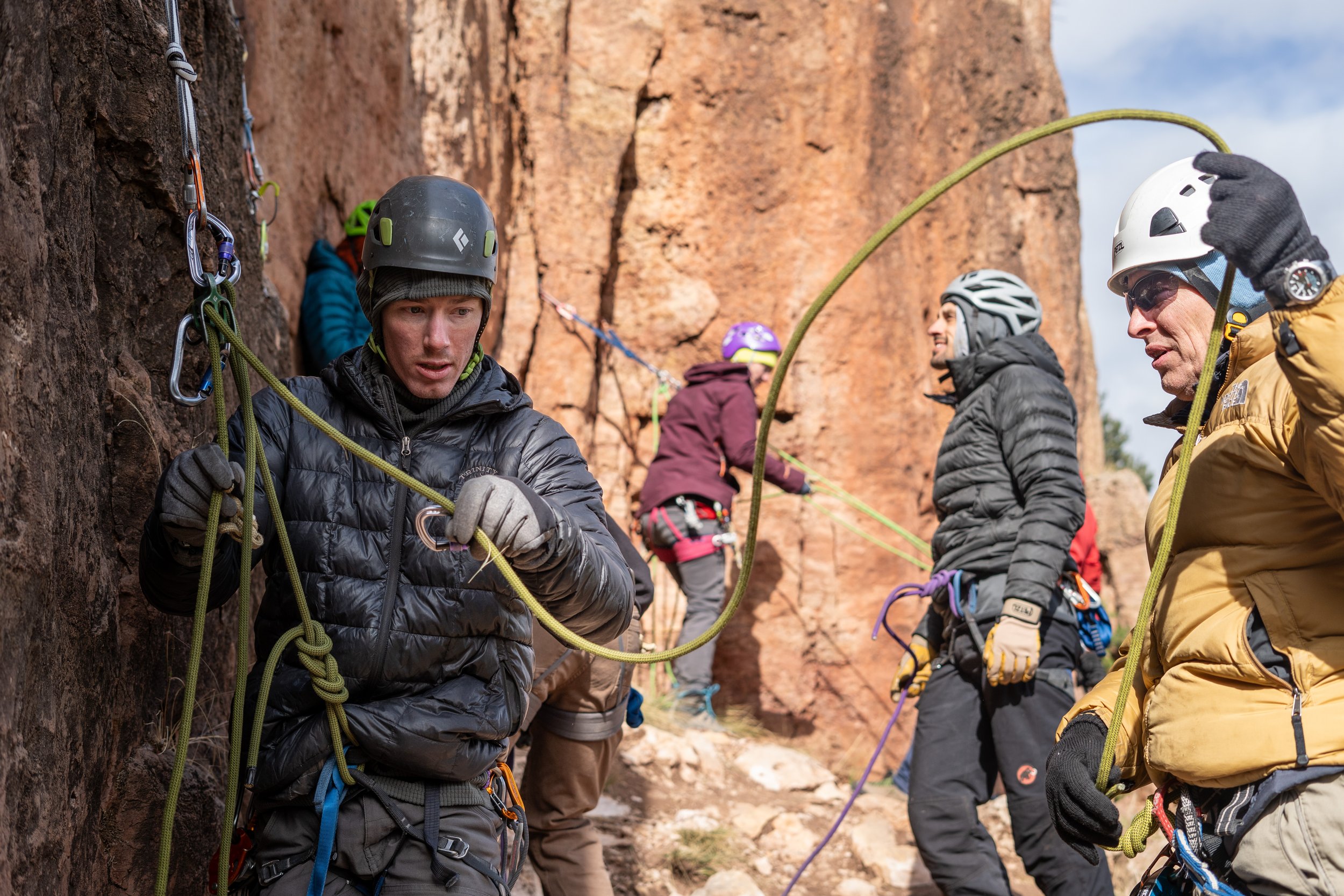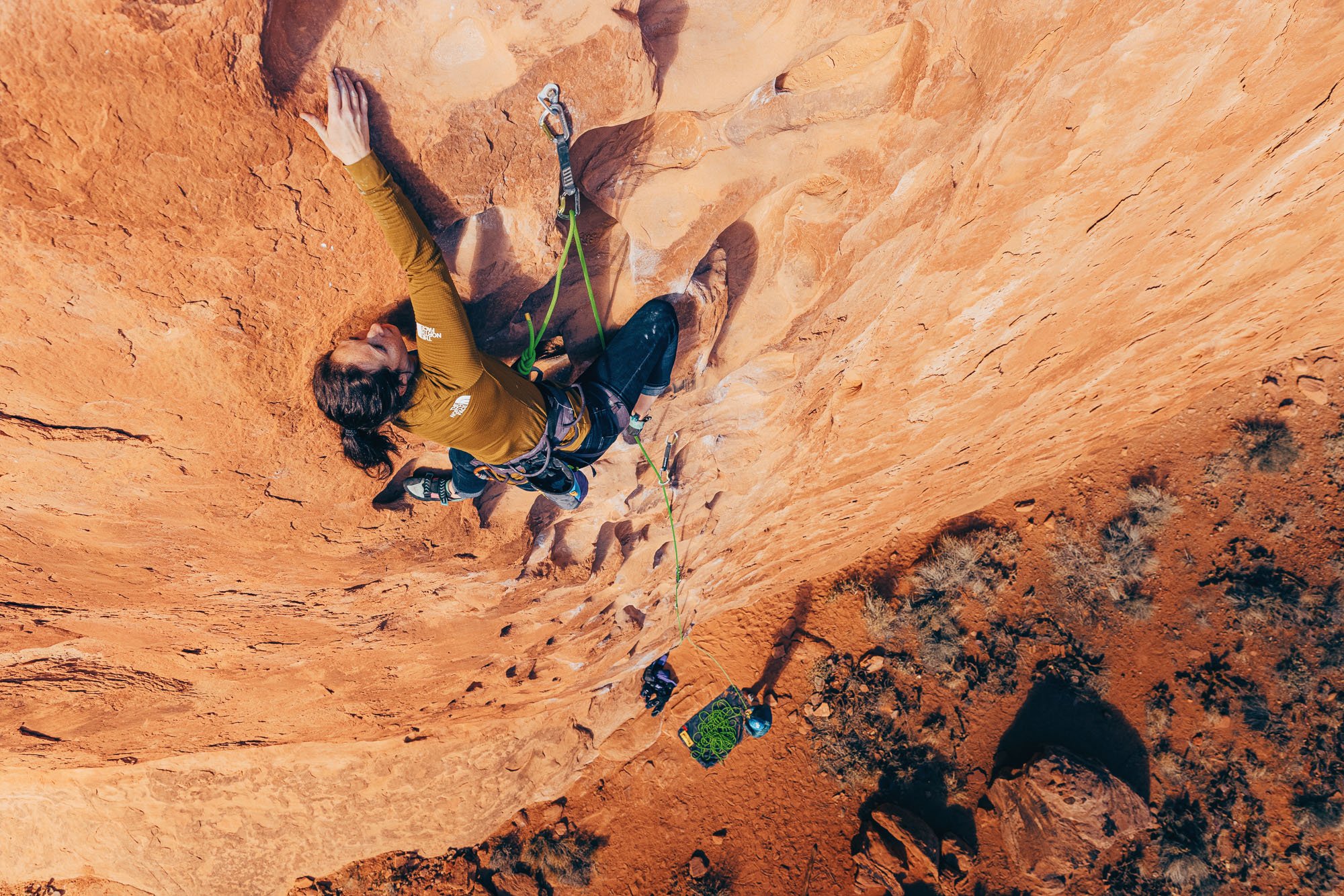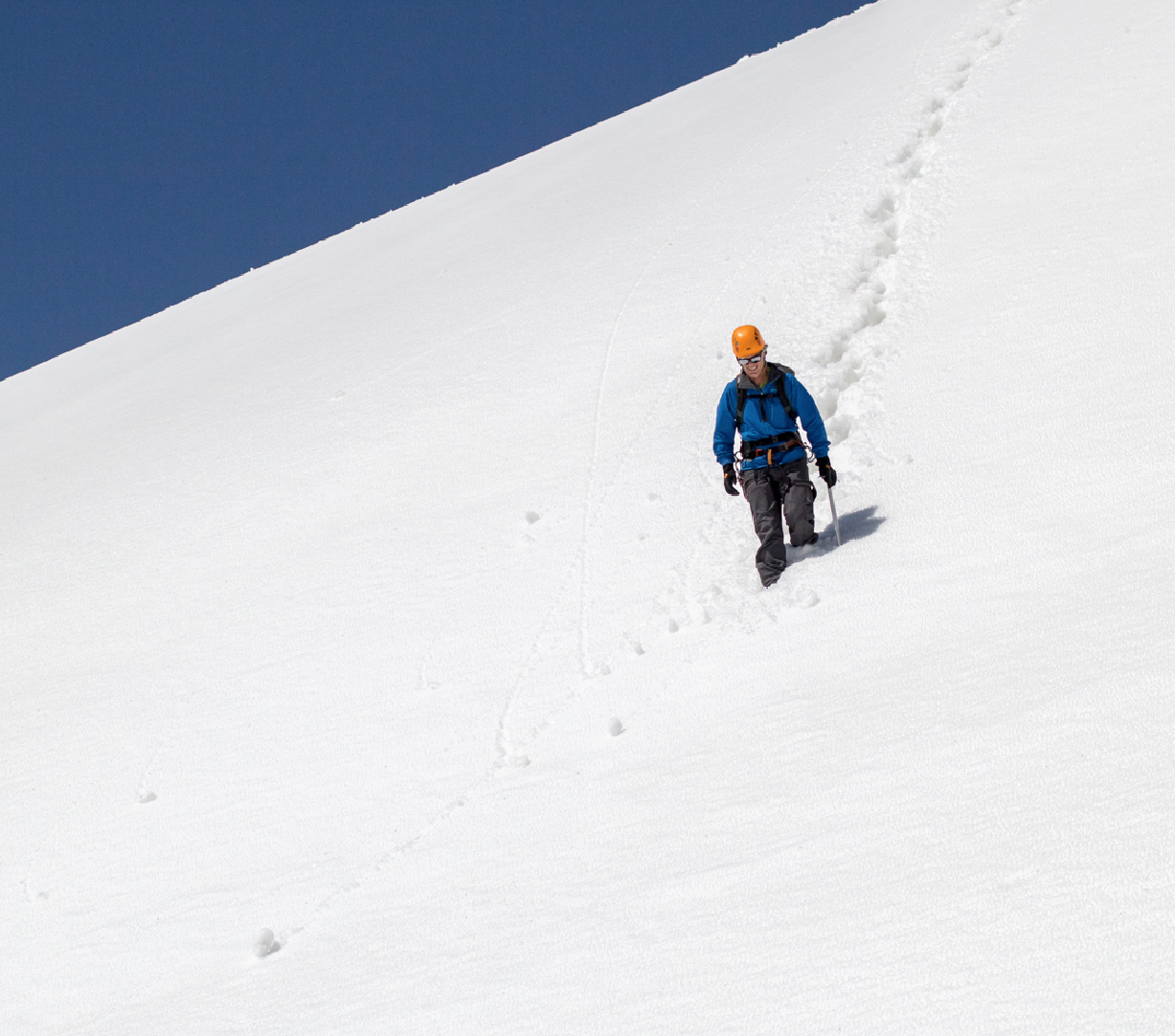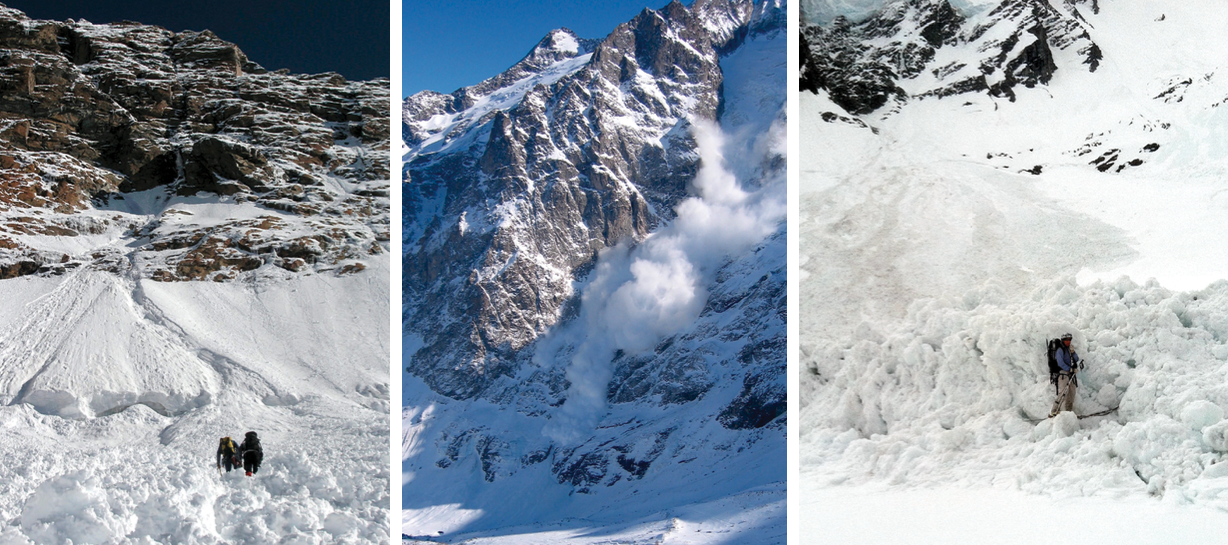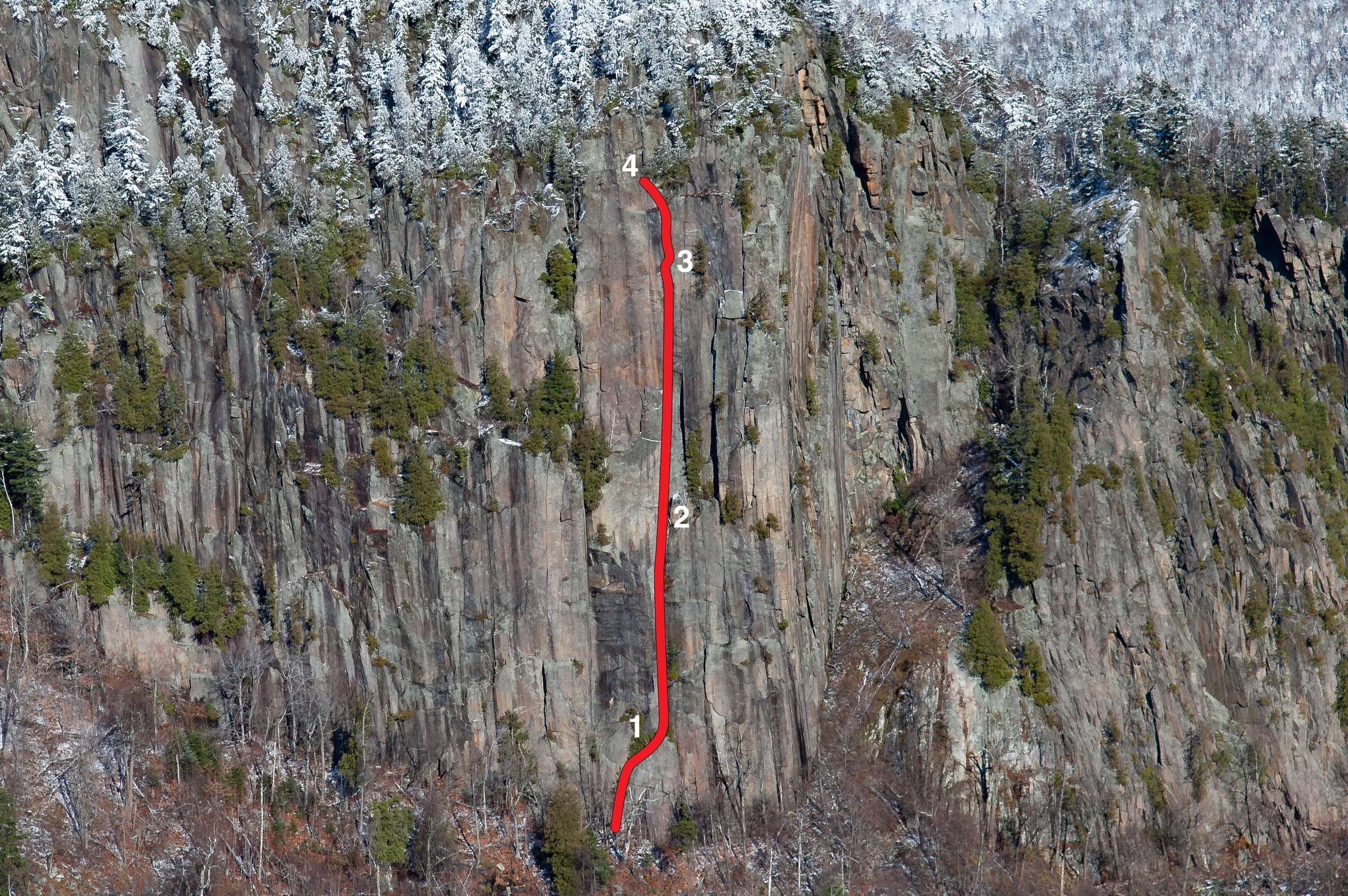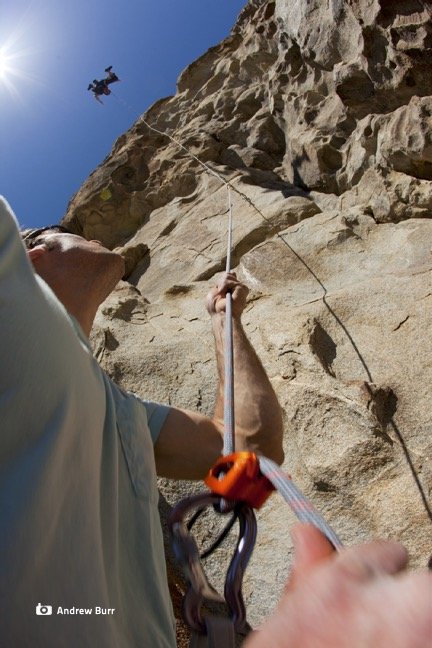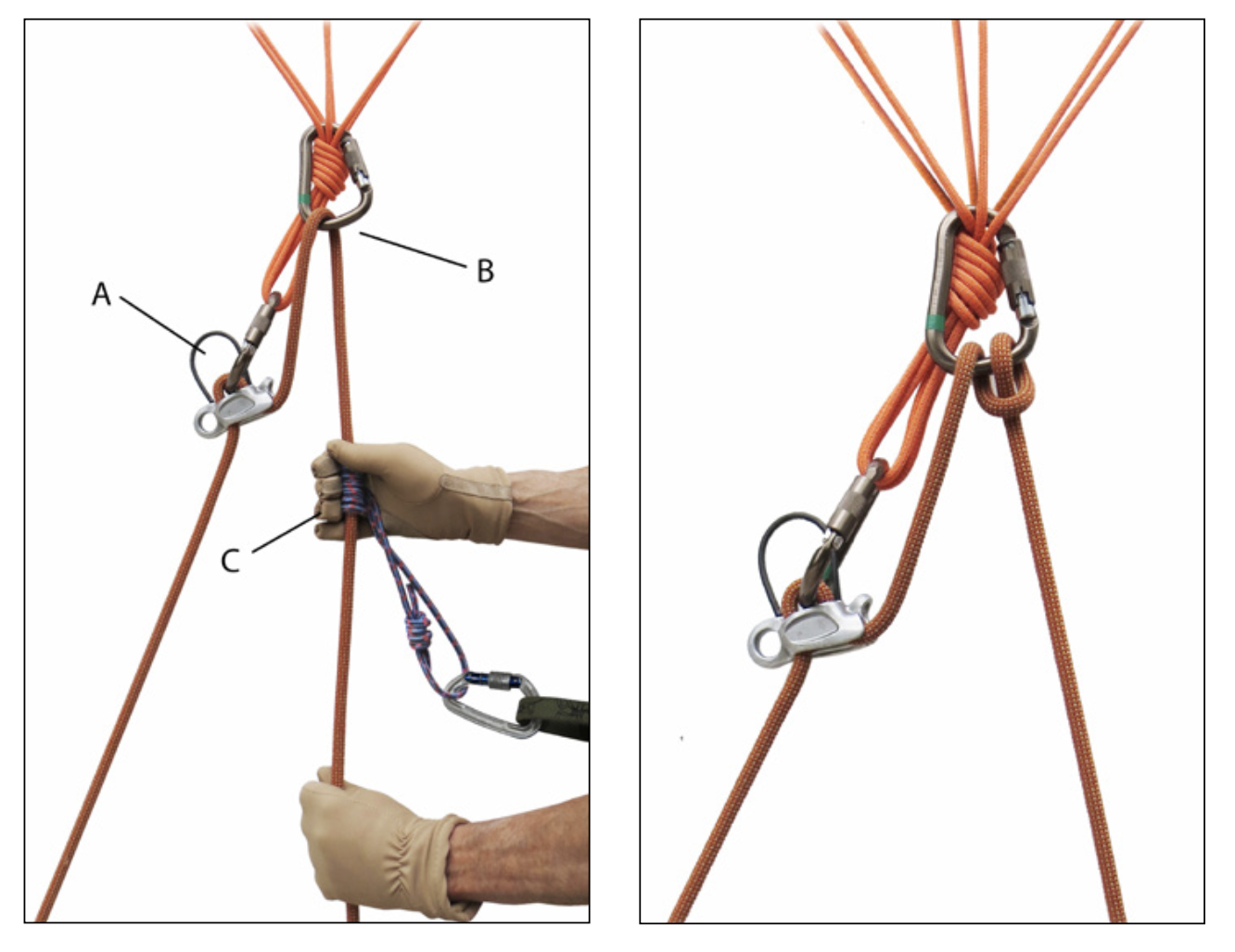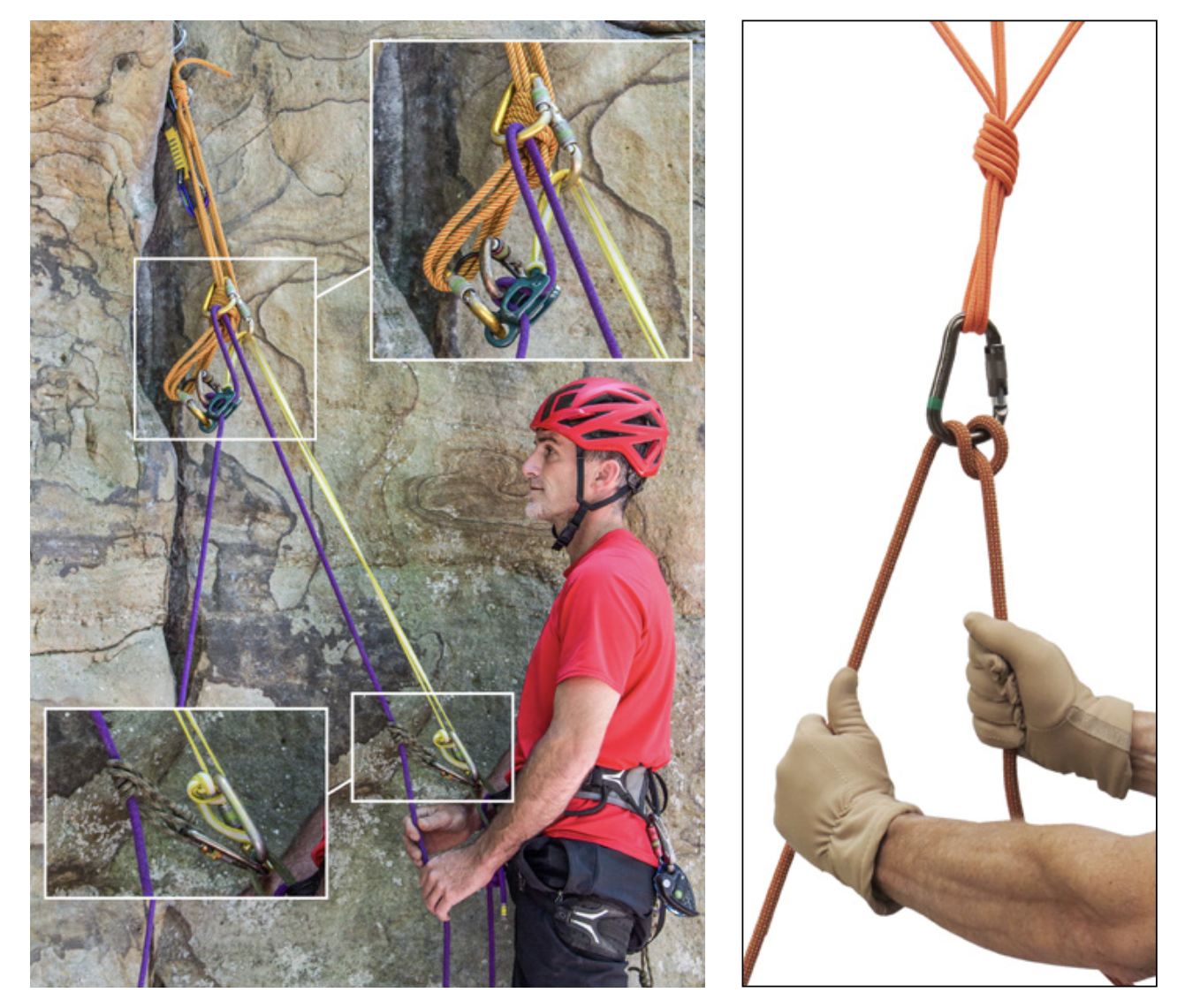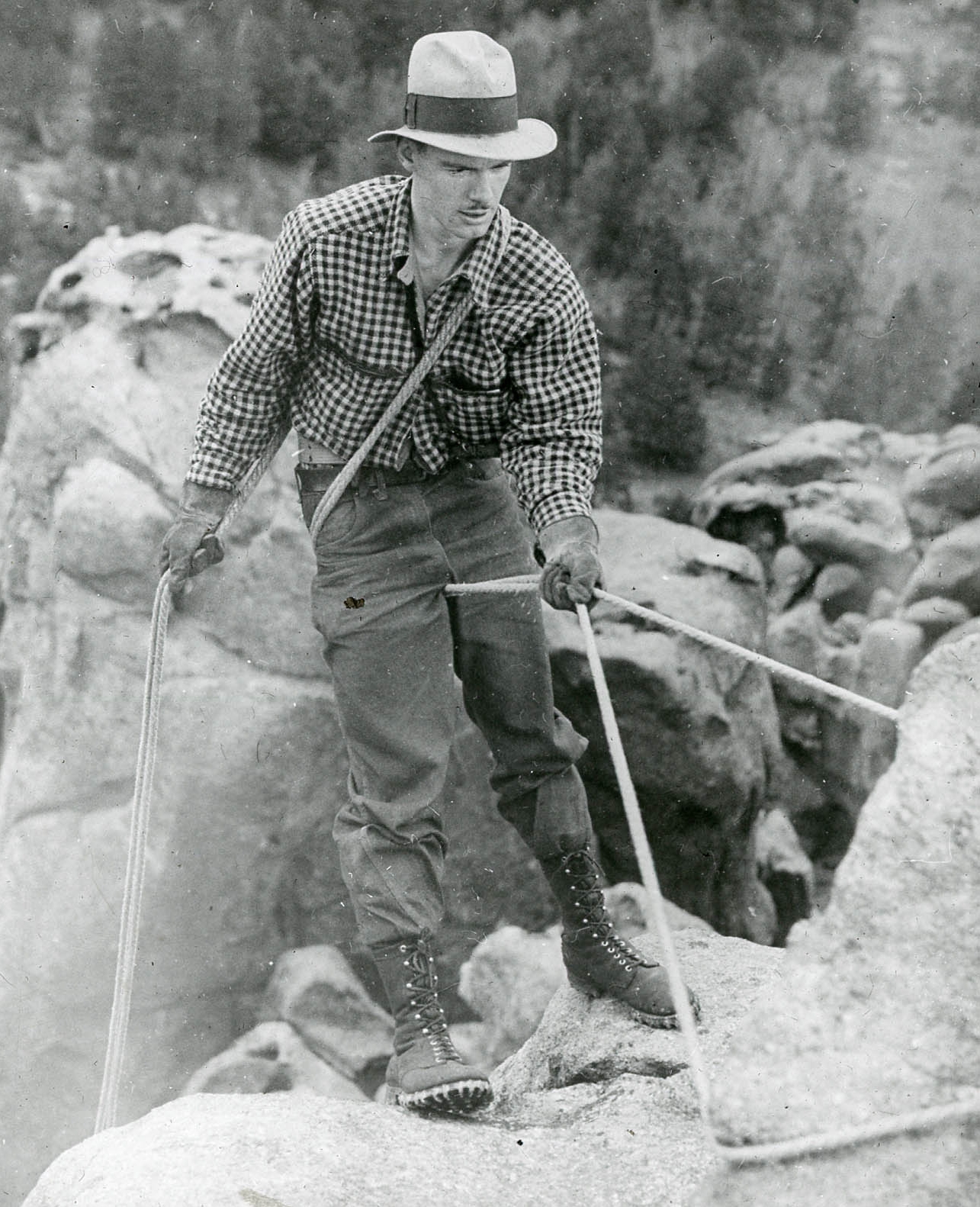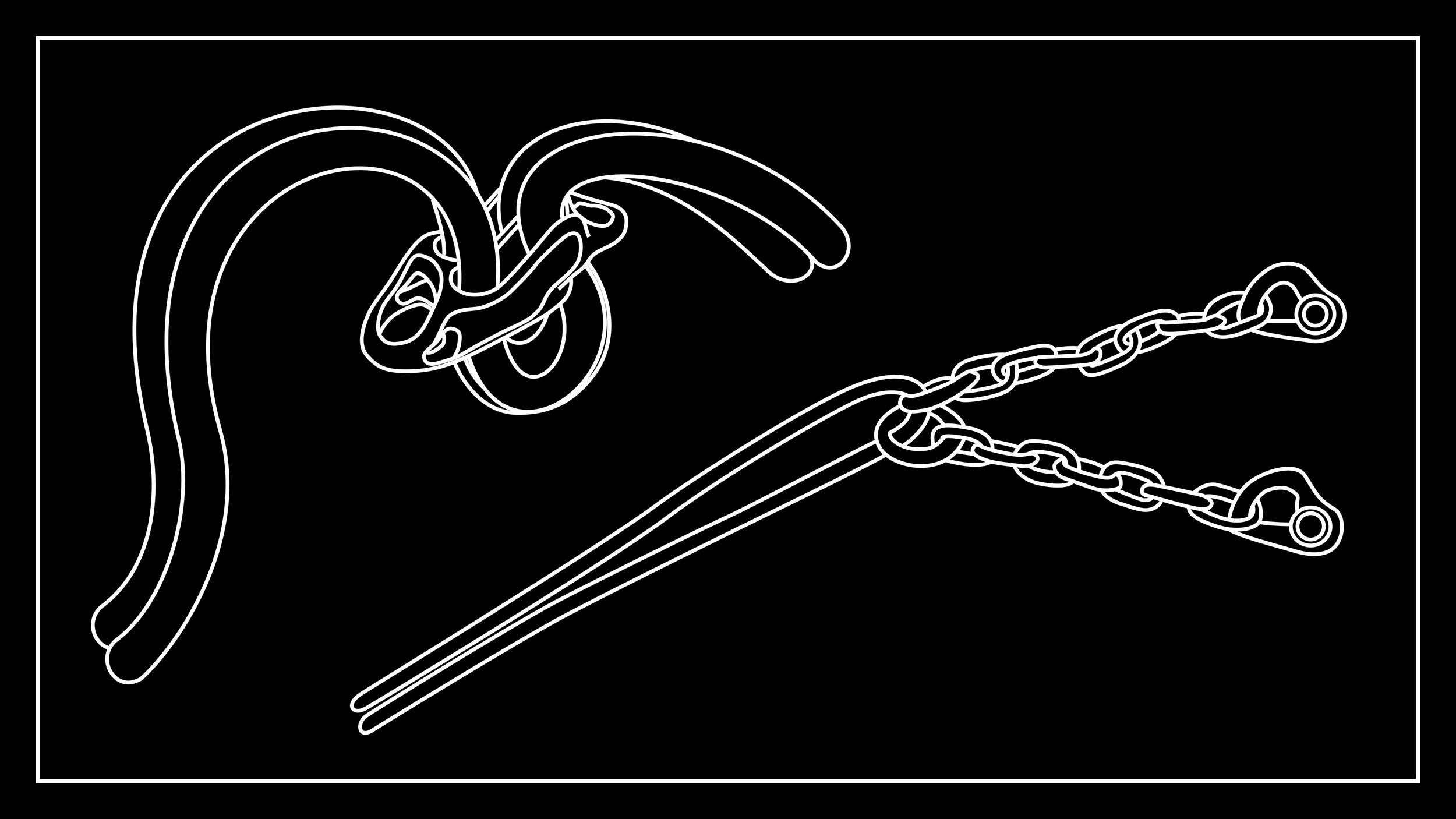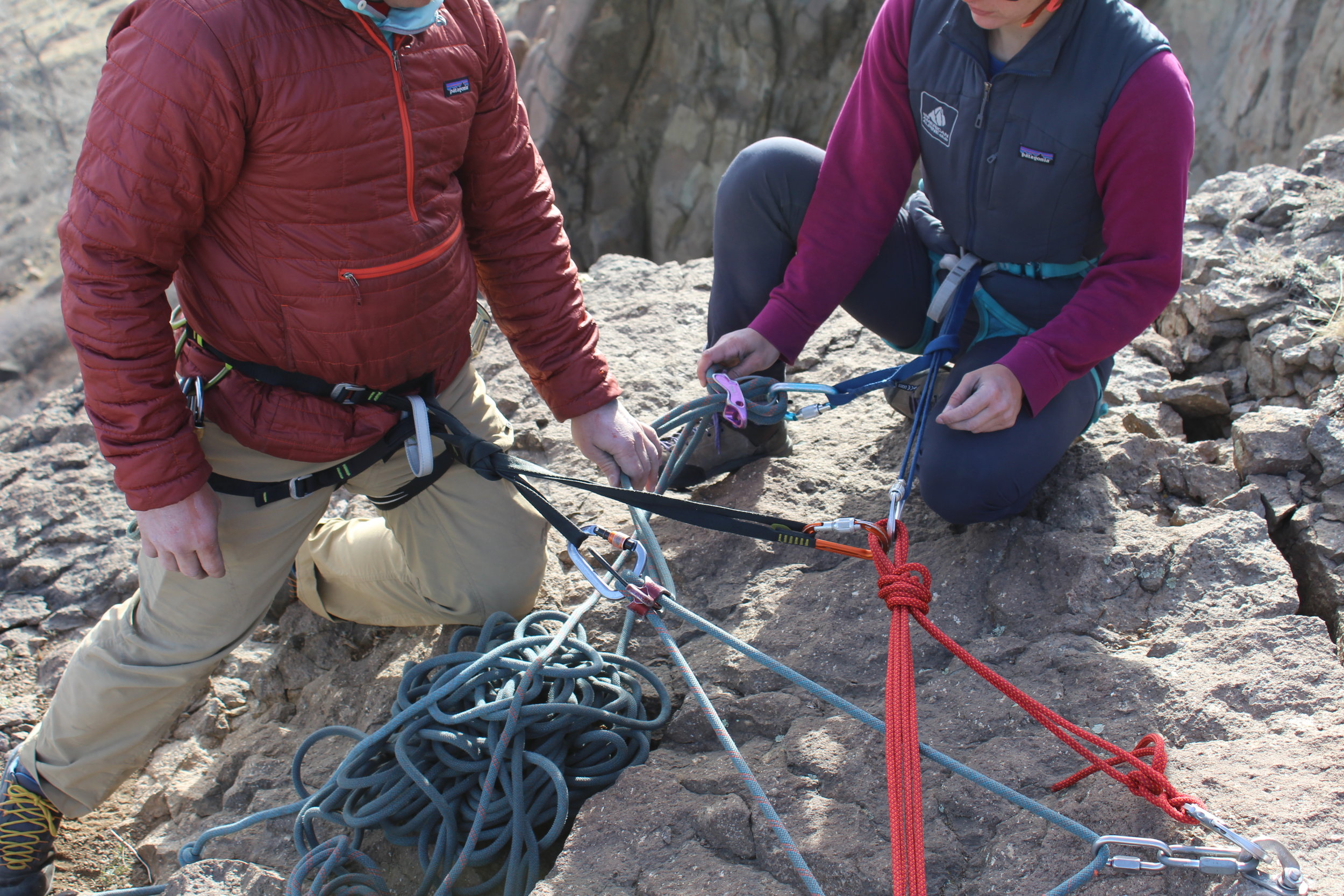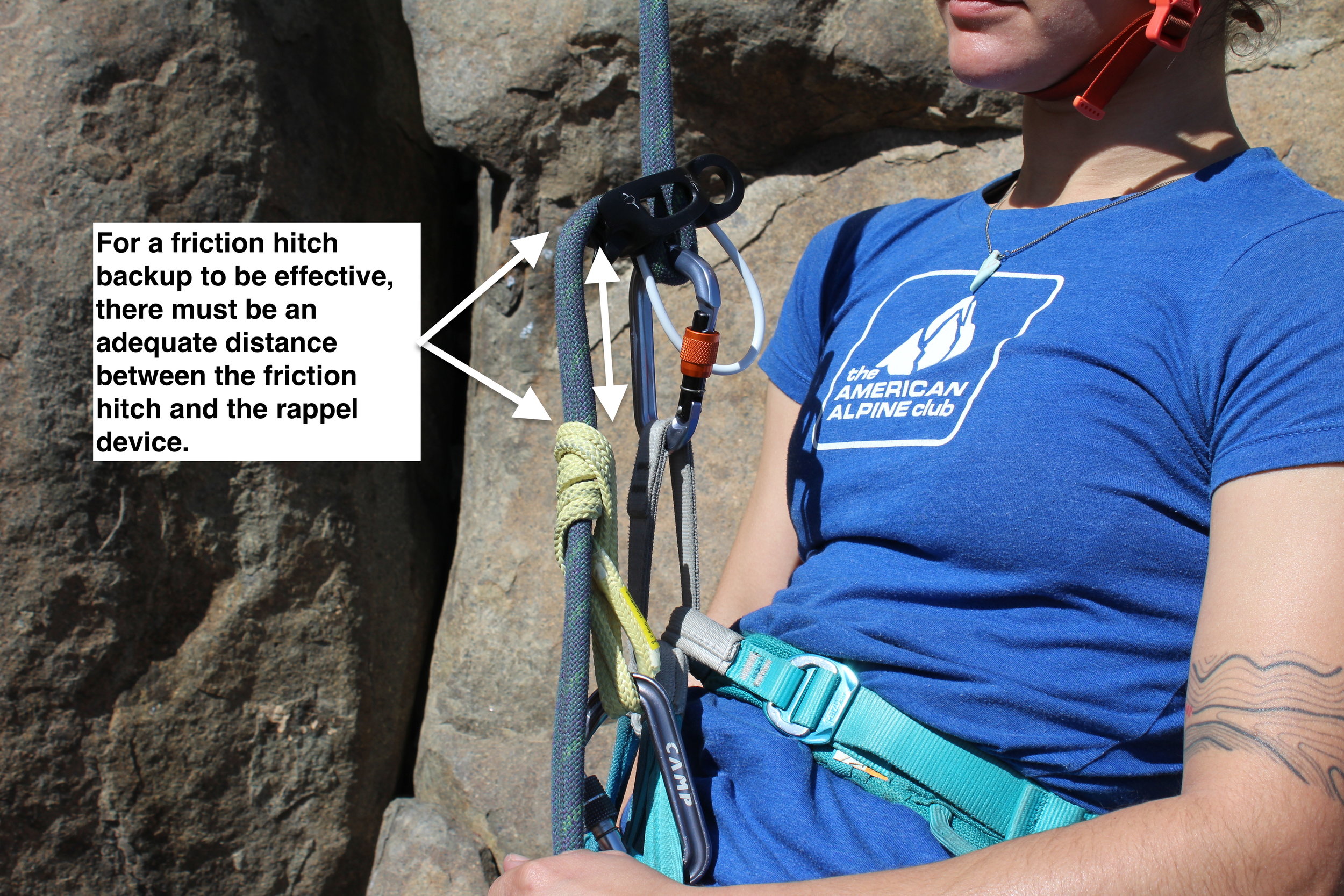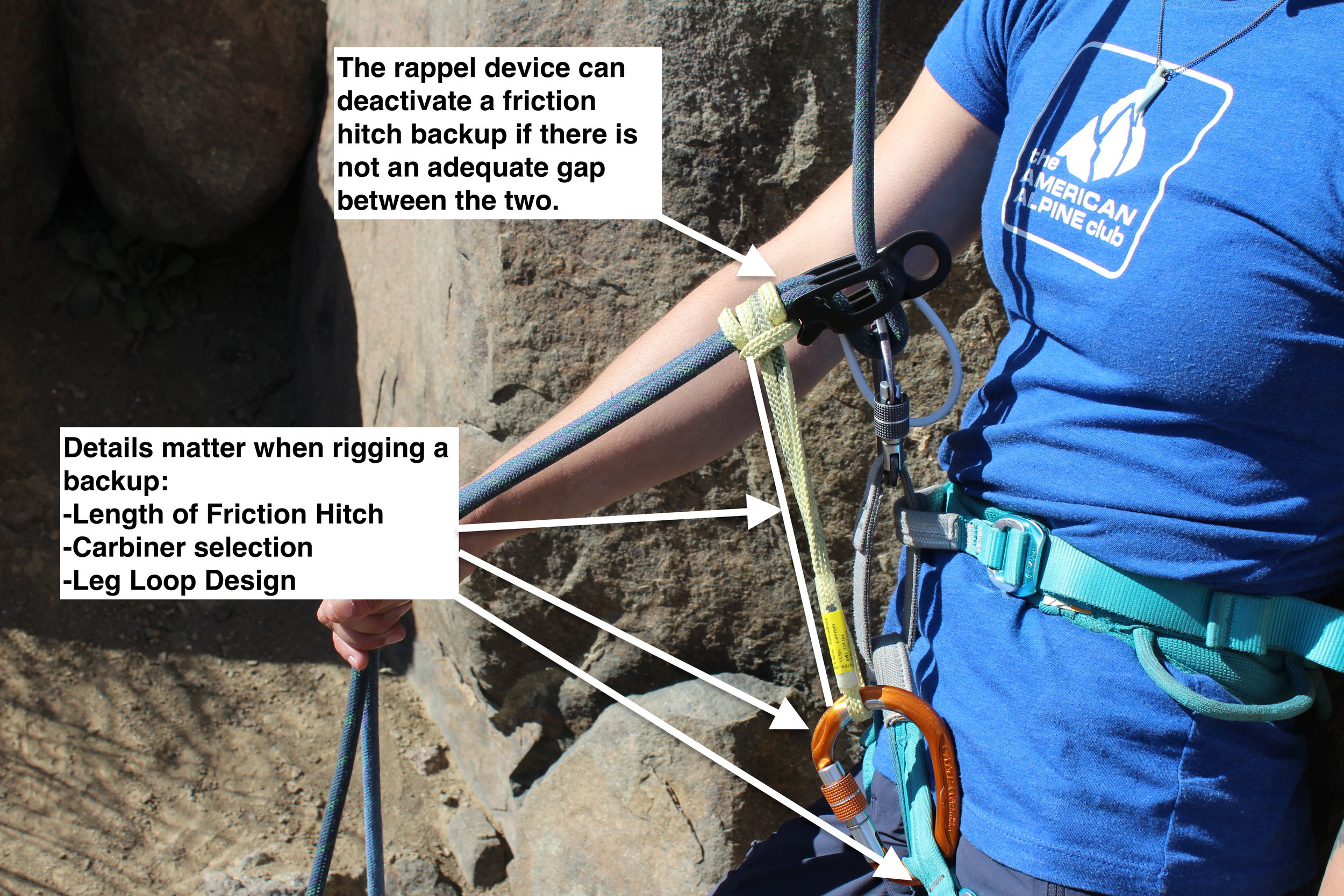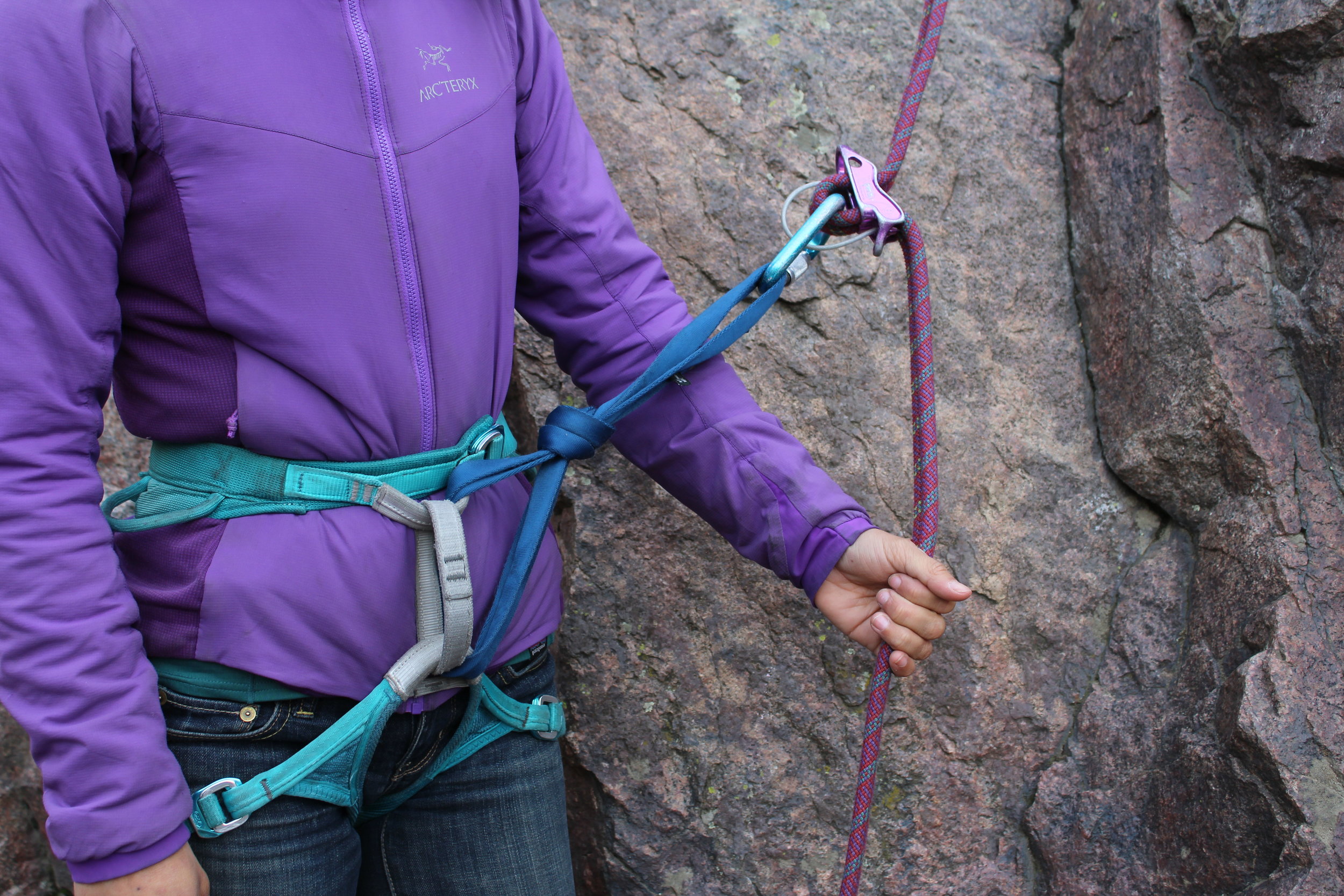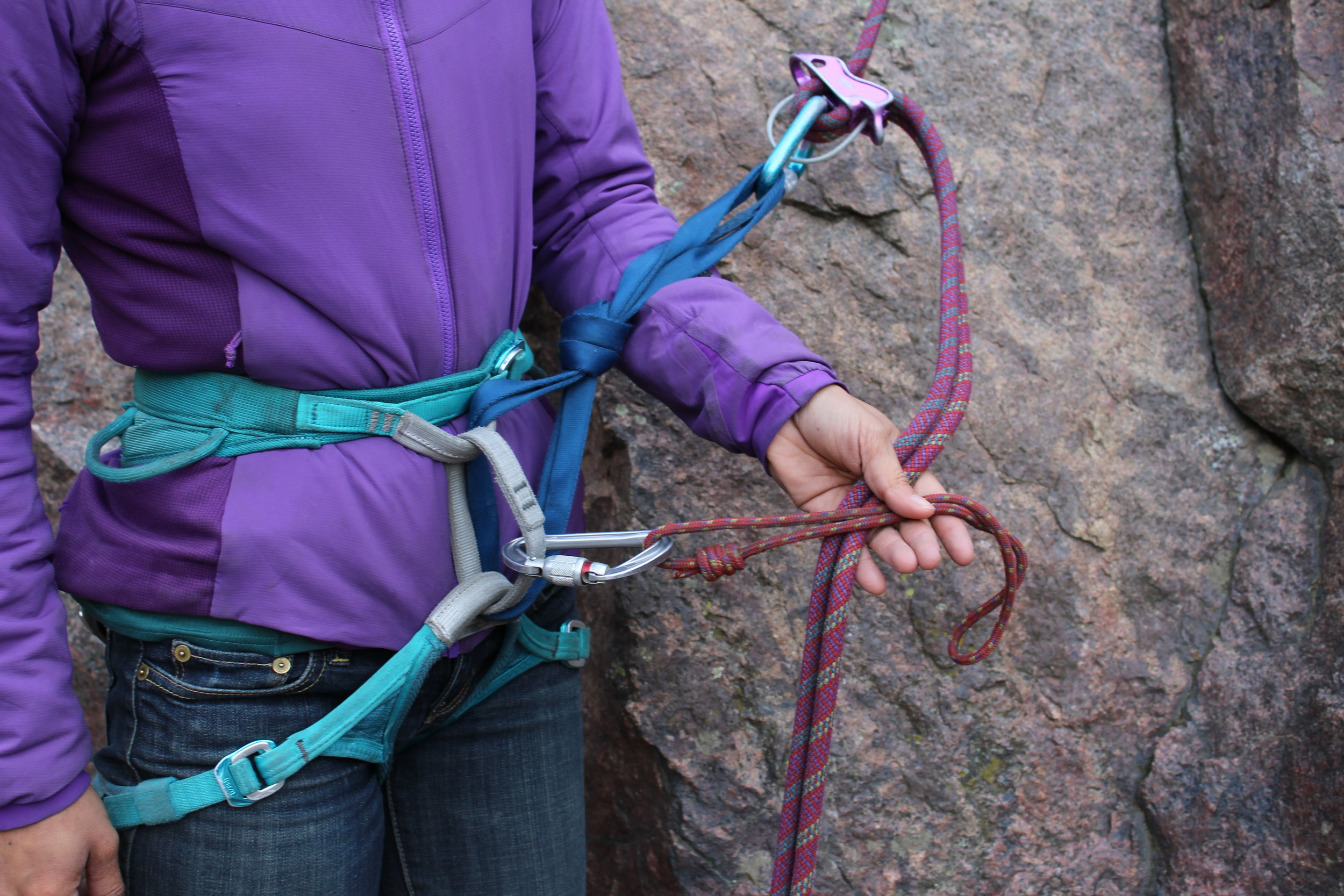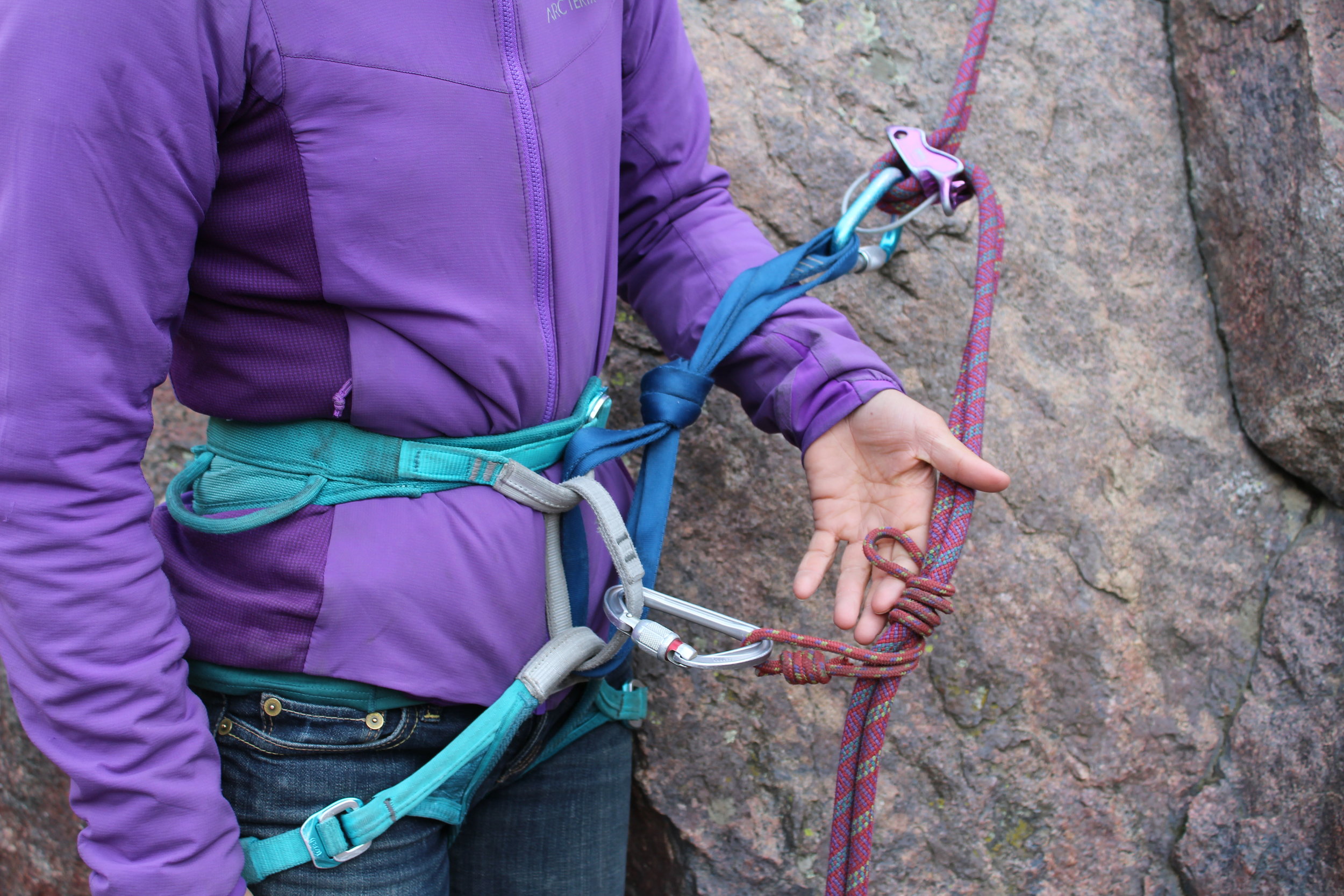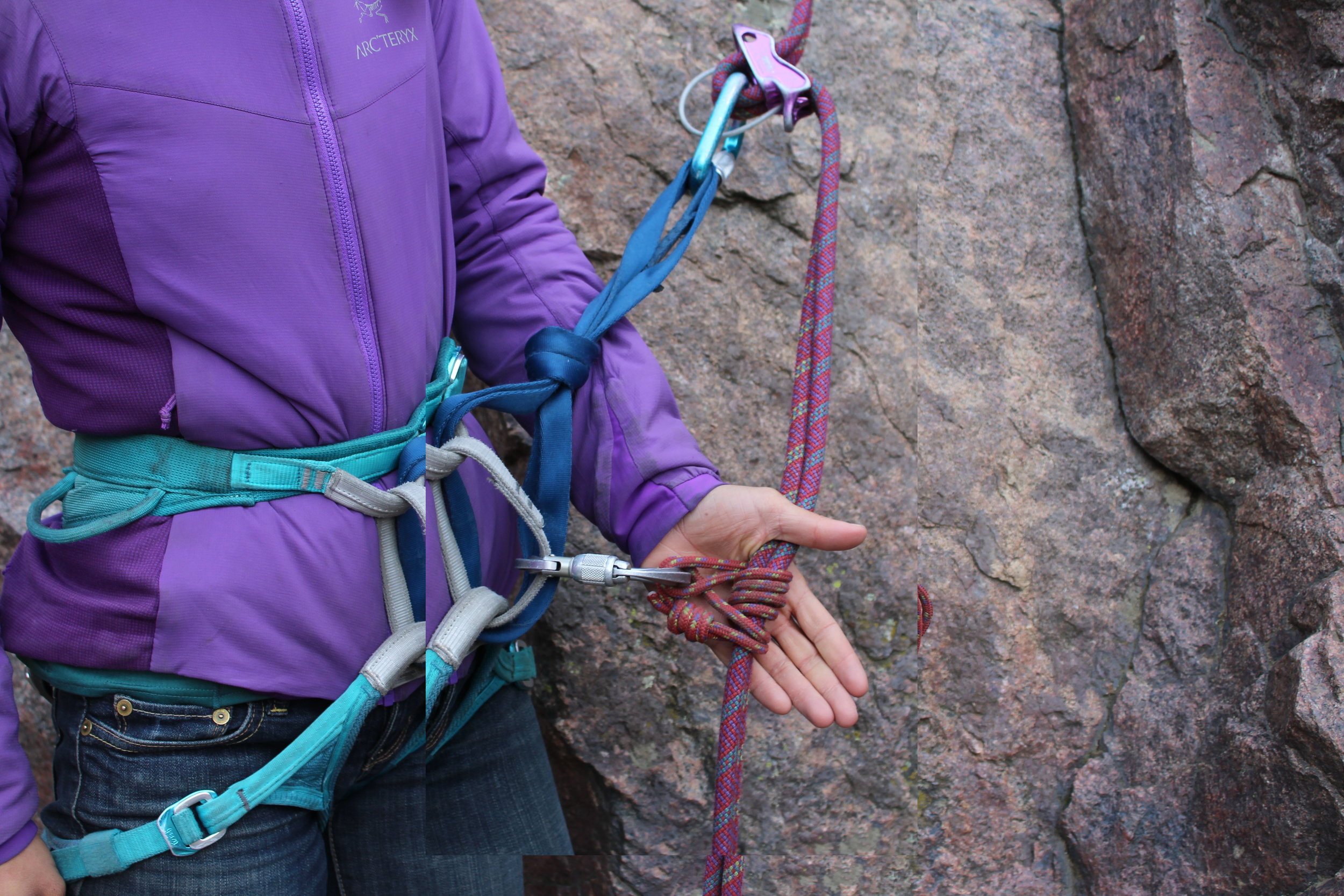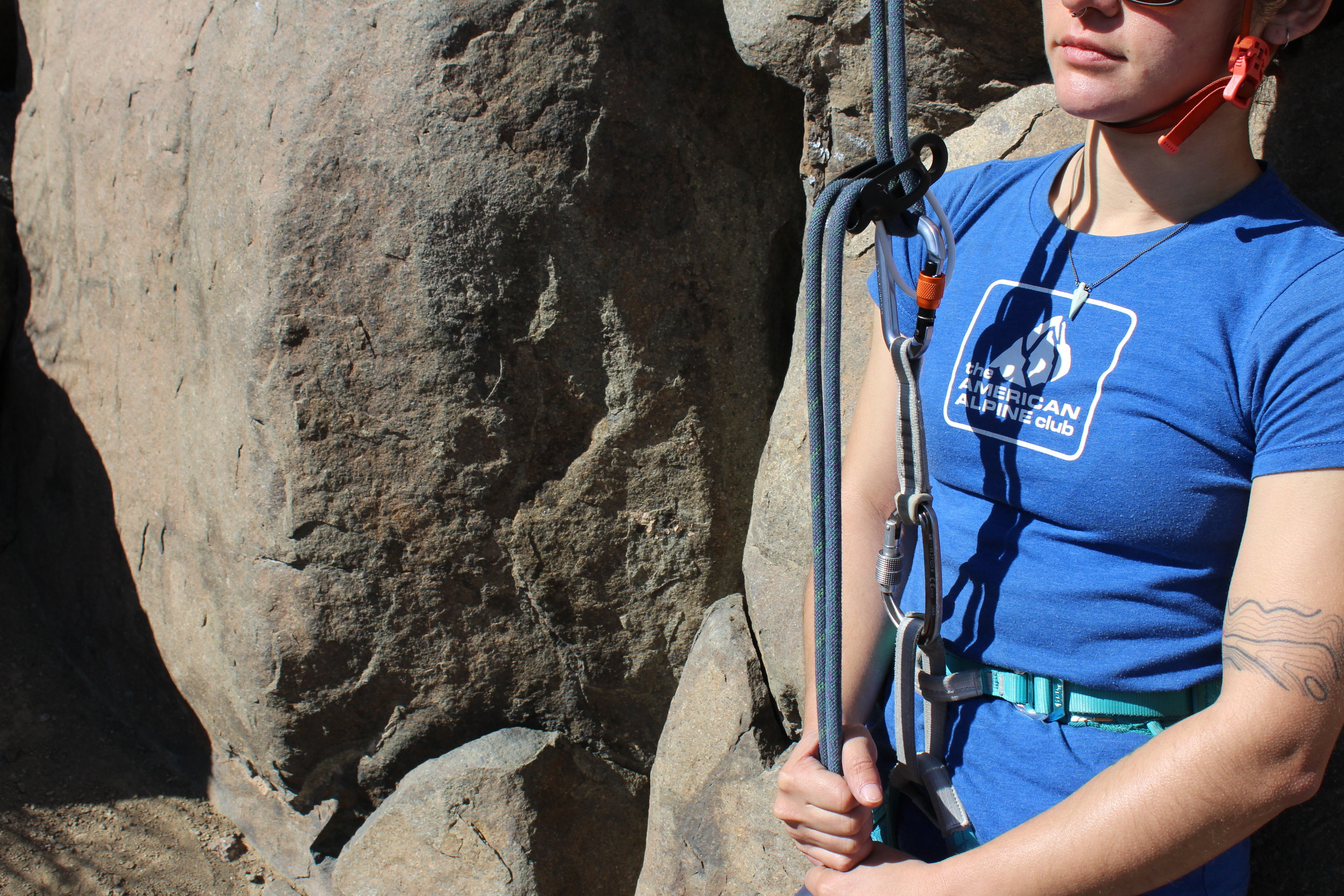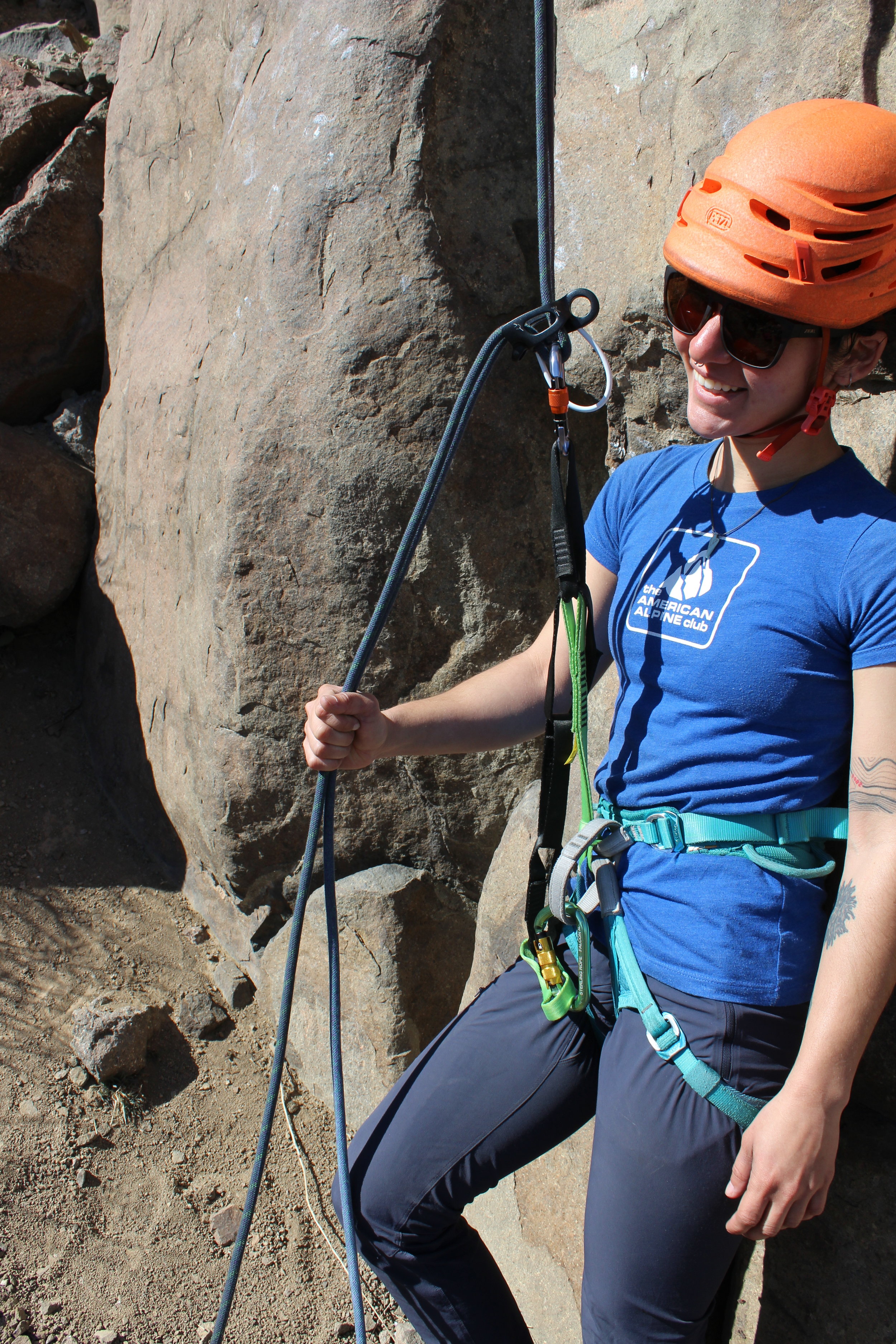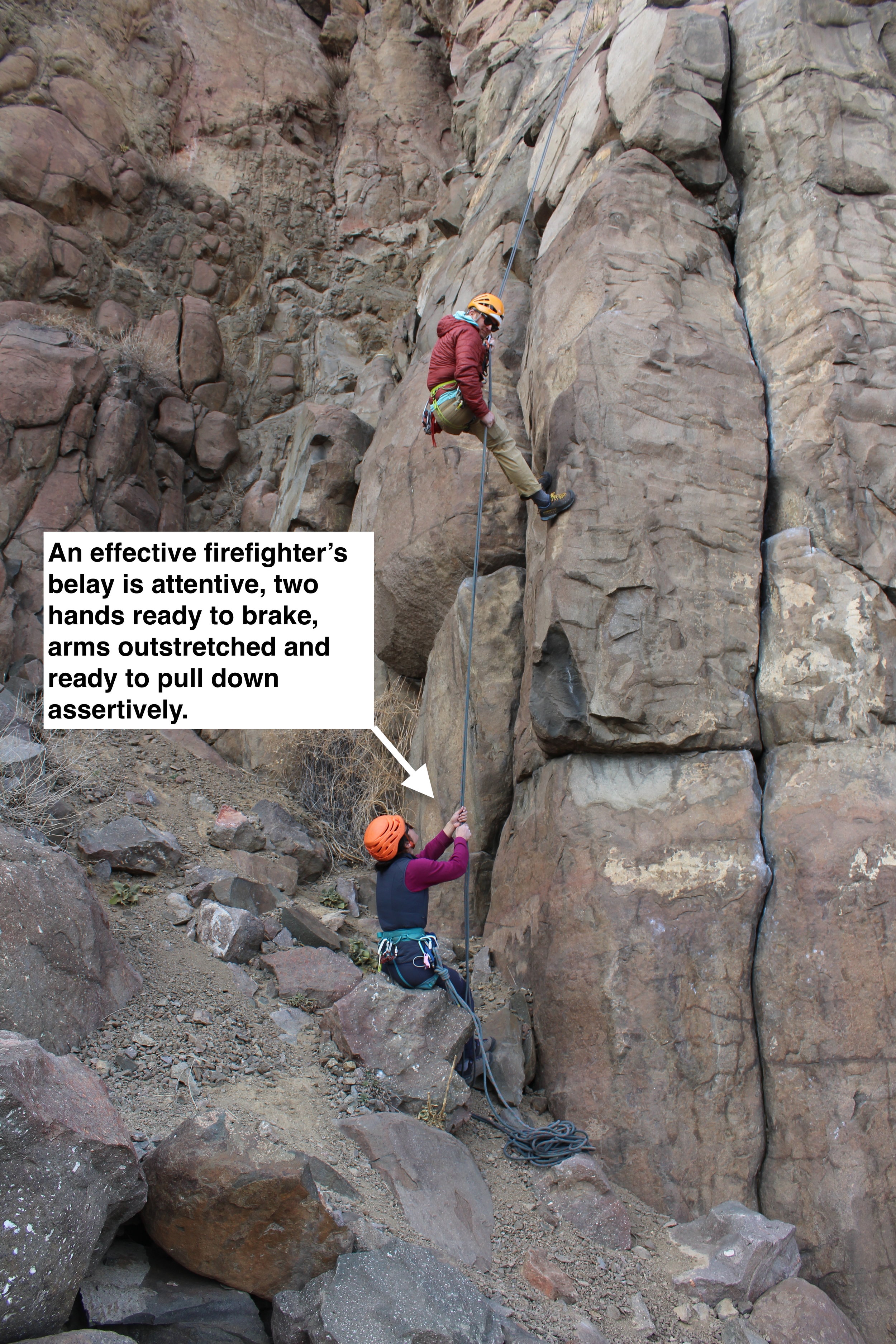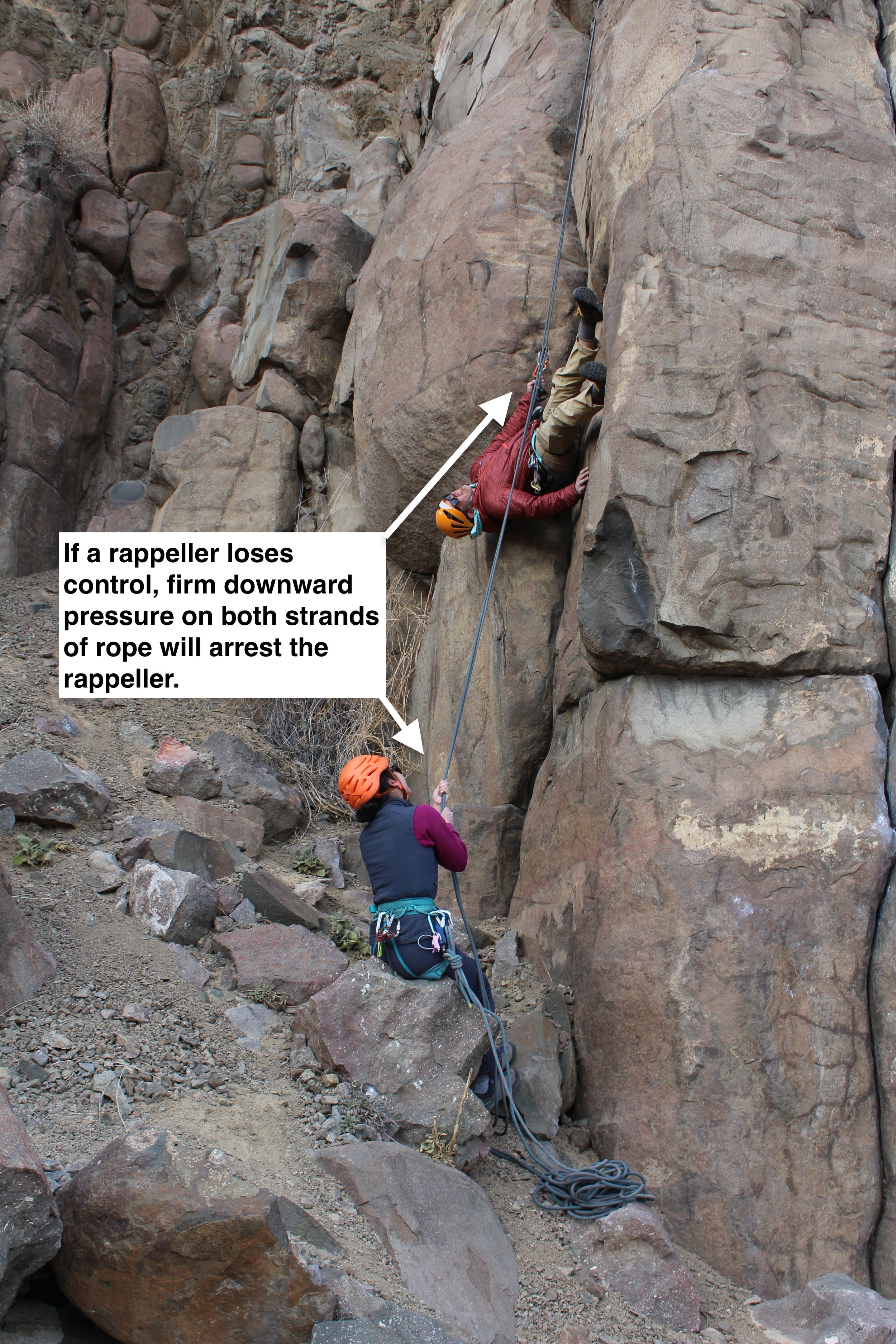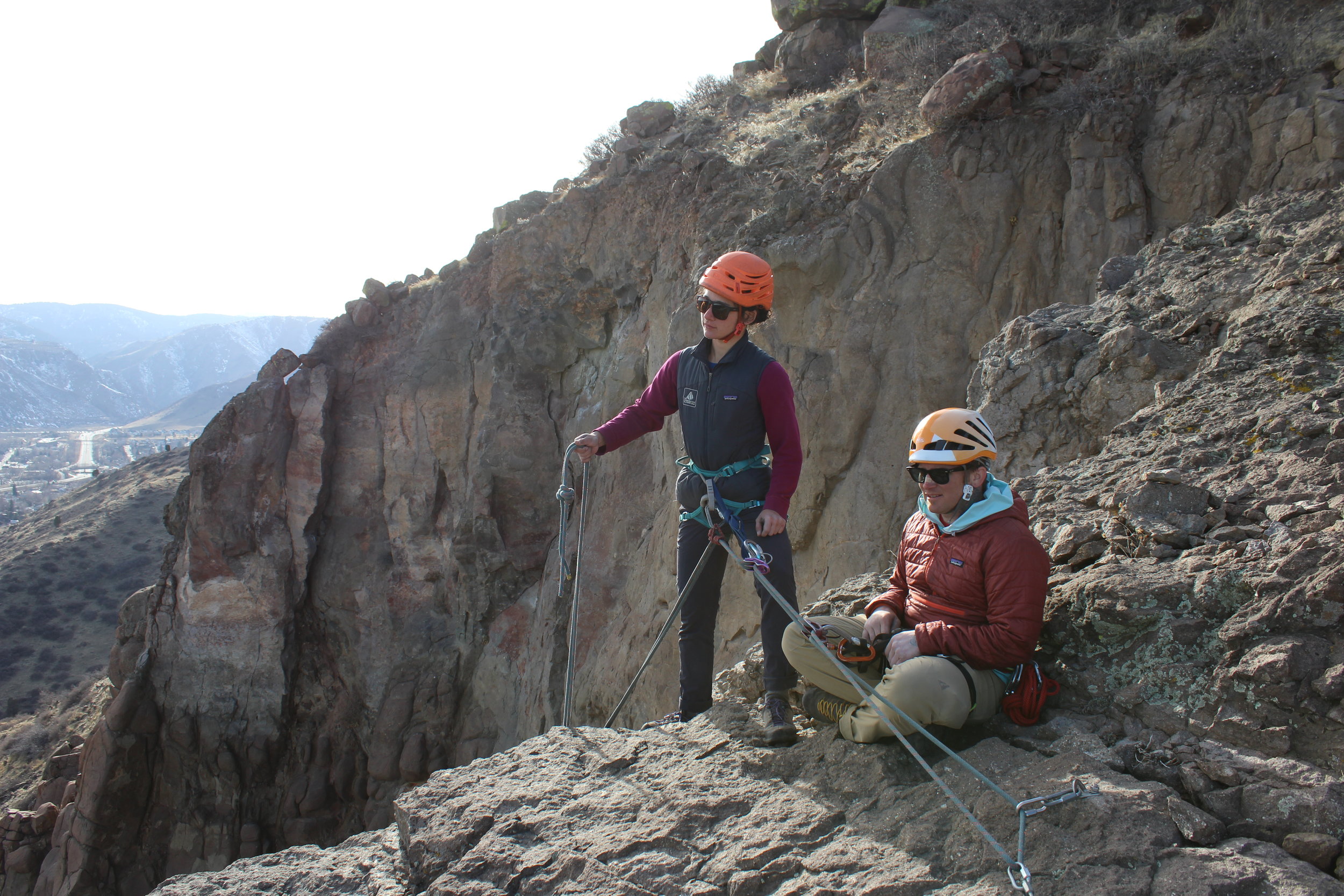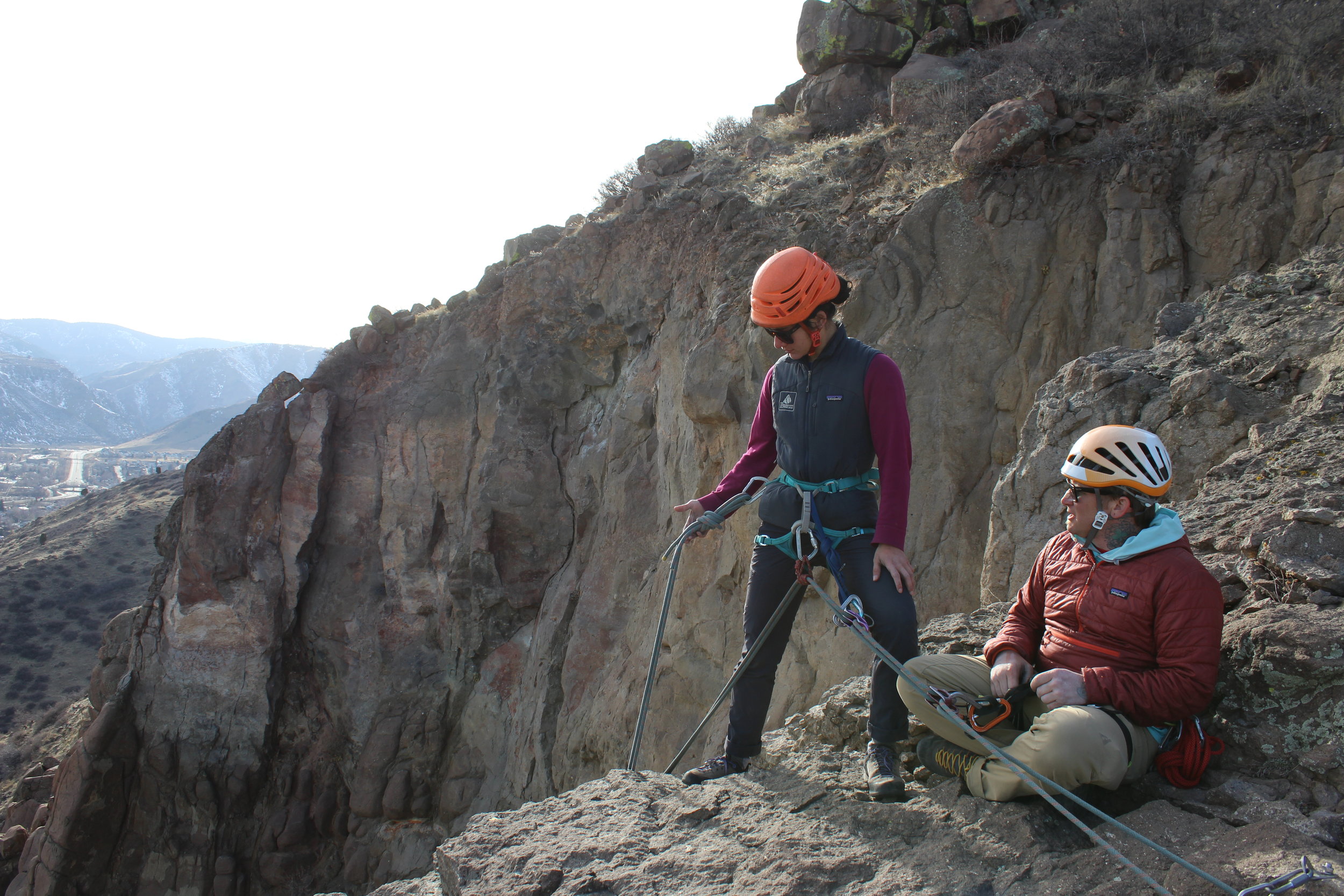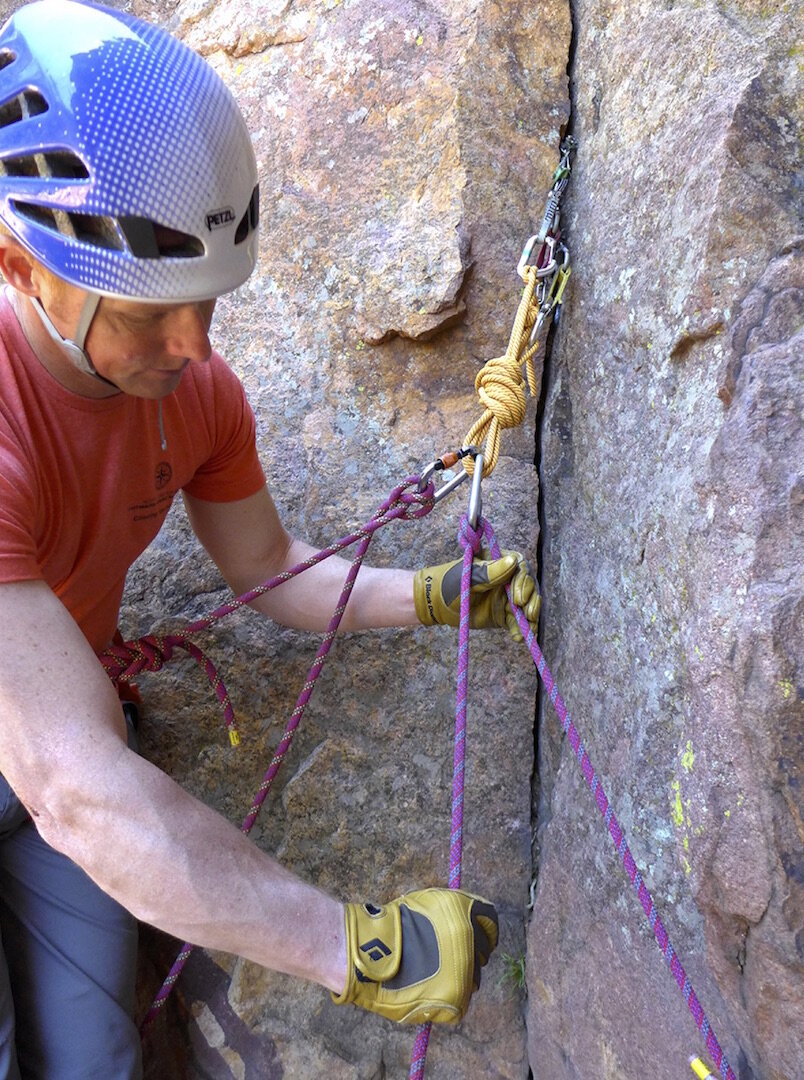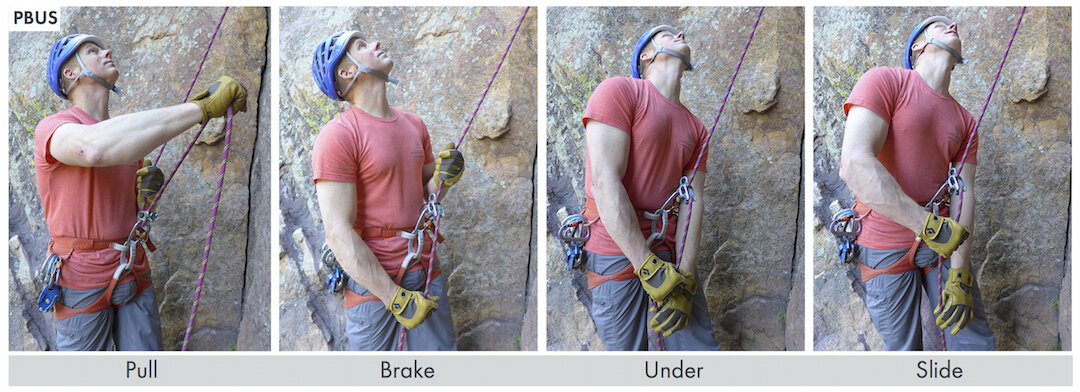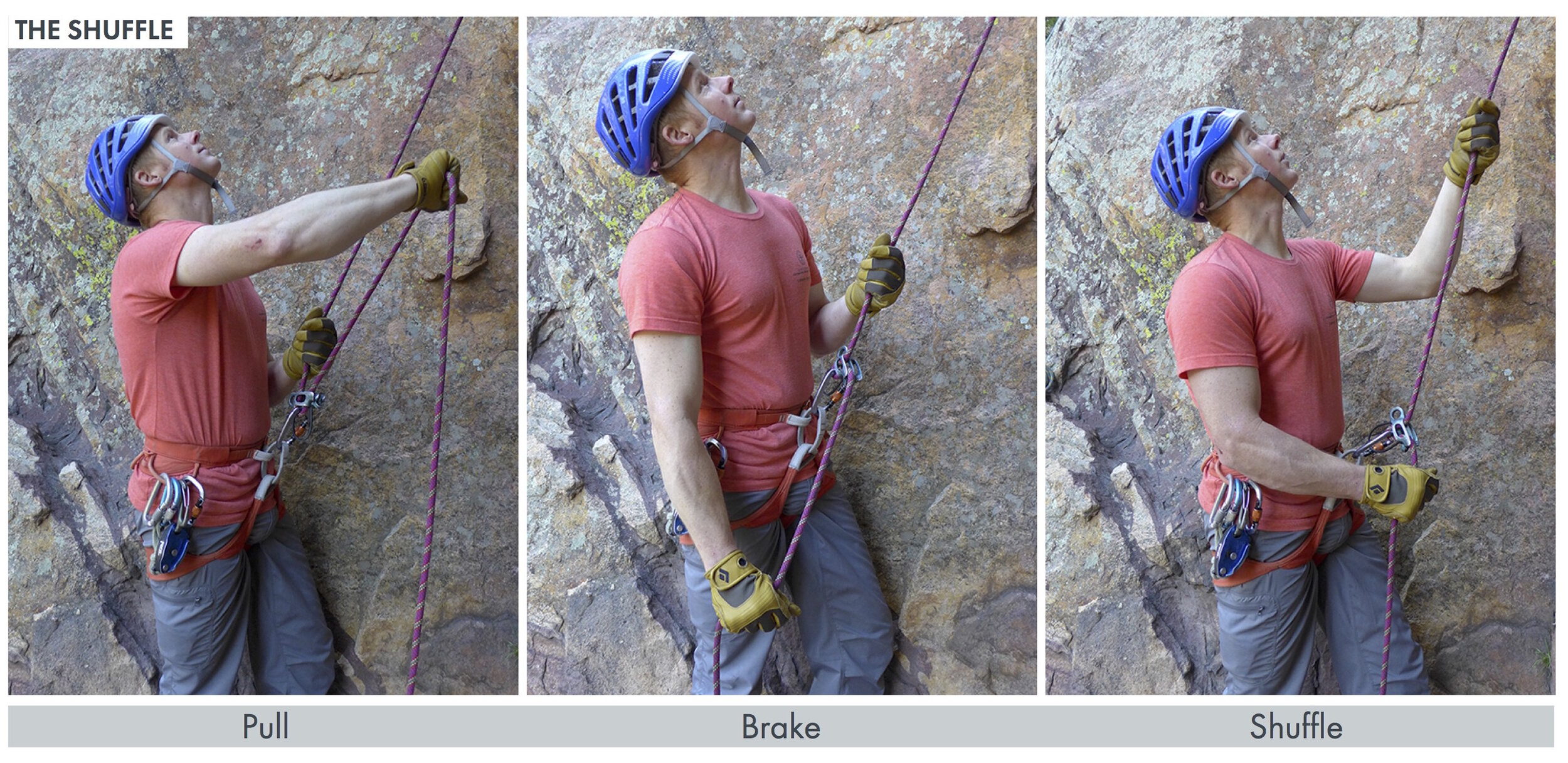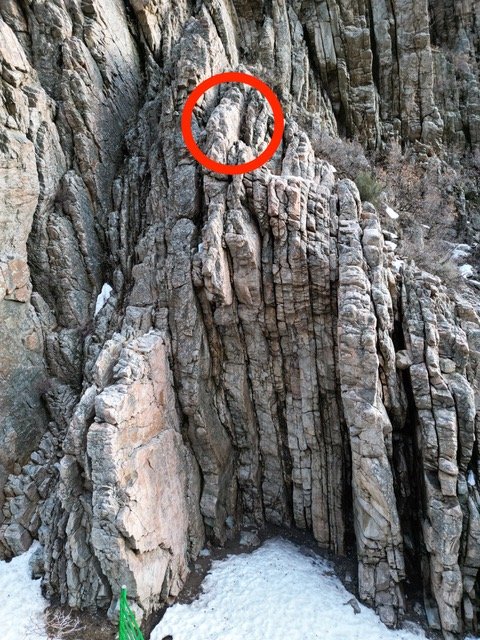We are about to enter the prime big-wall season for Yosemite Valley, so this month we’re featuring a big-wall mishap. Last year, a solo aid climber suffered a serious leader fall on a classic Yosemite wall. He used a bit of know-how and perseverance to help effect his own rescue. This report will appear in the upcoming 2023 edition of Accidents in North American Climbing.
Fall on Rock
Yosemite National Park, Washington Column
On June 28, at 10:59 a.m., Yosemite Dispatch received a report of a 42-year-old male who had taken an approximately 50-foot fall on The Prow (V 5.8 C2) on Washington Column. The climber’s plan had been a multi-day, aid-solo ascent. On the second pitch, the climber fell, ripped rock protection, and struck a ledge. He recalled, “I felt the sensation of falling—it was so sudden and so fast. Then I remember hitting a ledge hard, bouncing, sliding. I remember hitting two more small ledges on the way down.”
Washington Column. The Prow is a classic aid route and excellent primer for El Cap. It climbs the smooth, golden plaque of rock on the right side of the formation. Photo: xRez Studio
The climber was finally caught by his rope. He had sustained closed injuries to his head, knee, and ankle. He also had one open injury to his thigh that he tied off with an improvised tourniquet. He wrote, “I could not breathe in all the way. Possible lung injury—it felt like fractured ribs. Can’t do anything about that, other than controlled breathing. Next, I looked around and saw the deep laceration on my inner left thigh. This one I was worried about! I had flesh hanging out that I put back in, and I stopped the bleeding with my bandana. Then I checked my limbs. The hands, feet, neck, and back seemed okay.”
He began to ascend his rope in order to reach his cell phone to call for help. He recalled, “I had to get my phone from my haulbag, which was above me about 50 feet. I thought, if I were to get rescued it would be easier for YOSAR to get me from the ground and not on the side of the wall. I did not have my jumars with me because I was leading. So, I used two prusiks, one that I had and the second one that doubled as my belt for my chalk bag. I untangled myself from the ropes, backed myself up with a Grigri, and began the painful journey up to my phone. I finally arrived at the belay station [and the phone], quickly set up for a rappel, fixed both the lead and haul line, and got down to the beginning of the climbing, which starts at the top of a 4th-class section.”
The YOSAR hasty team located him at the top of the 4th class and provided necessary care. Soon a technical rescue team of four arrived and rigged to lower the injured climber down to the bottom of the cliff. From an open, grassy area between the South Face and Astroman routes, the climber was short-hauled by helicopter and transferred to a hospital.
Editor’s Note: In 2016, another climber fell from a similar section of aid on the nearby South Face route, when a cam pulled from a flared piton scar. That climber also ripped several pieces before coming to a stop. Take extra care placing cams in pin scars. Offset nuts, offset cams, and Totem cams often have superior holding power in these flared/grooved placements. Read the 2016 report.
The first few pitches of The Prow follow classic yet tricky piton-scarred cracks and corners. Extra care must be taken when placing gear in such flared placements. Photo by Ryan Meyers.
Analysis
“A piece for you and a piece for Mom,” as they say. Climbing above ledges is a heads-up moment—the threat of falling and getting traumatically injured is very real. As climbers, what can we do to make climbing above ledges safer? Backing up pieces is one option. Also, be aware of how much slack is in your system.
Other takeaways:
Bring a medical kit. A light medical kit while climbing could be a life saver. Ideally, it is never used, but it’s always wise to be prepared for an accident. A little tape, some pain meds, and gauze go a long way.
Practice and be familiar with self-rescue techniques. During this rescue, the injured climber did an excellent job of helping himself. Even after sustaining several injures, he was able to improvise gear, ascend his line, and rappel down the cliff. His self-rescue skills made the whole operation much faster and more efficient. Study self-rescue skills and practice with friends, or consider taking a self-rescue course.
Climb with a partner. While some enjoy the extra challenge of climbing alone, there’s no denying that aid soloing introduces more risk and complexity to a climb. Consider climbing with a partner for a safer climb, or at least acknowledge the added risk of climbing alone. Is it worth it?
The climber offered some final thanks and advice for others: “I cannot thank YOSAR, all the medical professionals, and all my friends and family who helped me and are helping through this event. I feel that even though being super prepared is a must, life just happens! I encourage all climbers to learn basic self-rescue skills.”
(Source: Yosemite National Park Climbing Rangers.)
Shop the ANAC Collection
With three spotters and five crash pads, Emily Diamond can safely launch into the crux of Heartbreak Hotel (V2). Photo by Pete Takeda.
From the Editor: On the Small(er) Rocks
I’m a week into a bouldering trip to Squamish. It’s peak season in terms of number of climbers, but it’s a little early for good conditions, that brief period in which cool temperatures converge with low humidity.
Bouldering is my first love. As a teenager, I started climbing in an abandoned quarry. Over the years I would learn that the spirit of climbing is in its movement and all I would need learn of any style of ascent could be traced back to those boulders. We wore painter’s pants and carbon rubber (non-sticky) high-tops called EB’s—pretty much the only performance rock shoe of the time. This was in the pre-pad days and spotting was unheard of. While bouldering, I managed to suffer my first serious accident—fracturing my leg at the age of 16.
Today, while topping out a classic highball, I have a half-dozen pads below, along with a handful of attentive spotters. That said, I am reminded that climbing on the small(er) stones, though generally regarded as safe, arguably holds a higher injury potential than any other facet of climbing. My reasoning is:
1. Move for move, bouldering is the most difficult game in climbing.
2. Bouldering is quite popular and exposes the largest number of climbers to the largest number of falls.
3. Every bouldering fall is a ground fall.
4. Crowds can create a false sense of security.
5. The uninhibited and maximal physical effort demanded by bouldering can draw attention from critical peripheral matters, like pad placement, spotting, and falling.
Boulderers hit the ground more than in any other genre. While these accidents do not incur fatalities (at least that I am aware of), nor prompt spectacular rescues, they do have a huge impact on our community.
I encourage anyone experiencing or witnessing a bouldering accident to report them here.
While we annually publish a few bouldering accidents—the vast majority of them result in lower-leg and/or wrist/arm injuries, and the vast majority self-rescue—obtaining data is important. It is prudent to reinforce best practices. Read more on bouldering safely here.







































